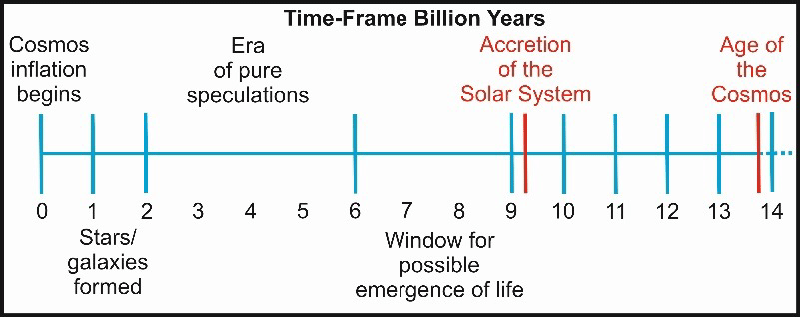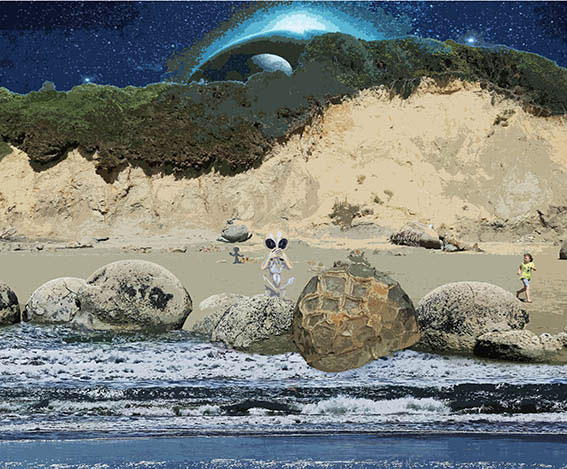The enduring question is: “Are We the First?” From what we already know of chemistry—especially that of carbon and water—it is highly probable that we are not the first. We also may well not be alone, with even the possibility that life elsewhere in the Cosmos could be ubiquitous—and often, from time to time, scientists make bold, optimistic, conjectures about such life. To ascertain how any life emerged on Earth and, therefore, may have emerged elsewhere in the Universe is proving to be an uphill task. To put it in other words, we don’t even know how many relevant steps there are when it comes to ascertaining the provenance of life on the Earth, let alone in the Universe at large. So, are we anywhere nearer to answering the question: “Was There Life Before our Solar System?”
To try and answer this question, we would need to turn back the geological “clock” by about 4.6 billion years, as this is the age of our Solar System (Figure 1). We can assume the age of the Cosmos to be in the order of 13.8 billion years; further, it took one to two billion years for the first stars and galaxies to appear without the accretion of any other solar systems. This left about seven billion years for life to have emerged somewhere else, rather than within our own Solar System. The early star formations were necessary for the initial formation of elements, not only the essential ones like carbon, nitrogen and oxygen, but also metals such as iron.

On the other hand, the early Universe would have been a hostile environment as many of these newly formed atomic nuclei were ejected at high energies. Although some are still hitting the Earth in the present age, many are deflected by magnetic fields or absorbed by the atmosphere. Interestingly, these charged particles were first detected by balloon experiments in 1912, from where we get the name cosmic rays, and also earning Victor Hess the 1936 Nobel Prize in physics. The early Universe would have had a higher background temperature than today’s relatively frigid 2.7 K and would have been full of energetic particles such as protons, electrons and alpha-rays as well as electromagnetic radiation: UV-C, X- and gamma-rays.
The claim by some scientists that life is highly resilient and therefore could have emerged during this “era of pure speculation” (Figure 1) is exemplified by the polyextremophile Deinococcus radiodurans which is resistant to extreme dehydration and acidic environments, as well as to extreme radiation levels which would incinerate humans. However, it is not possible that life could have emerged within the time-frame of two to six billion years. Further, how many solar systems were accreted within this same epoch? Subsequently, it is possible that life could have emerged from year six billion onwards but so far there is still no actual concrete evidence…



